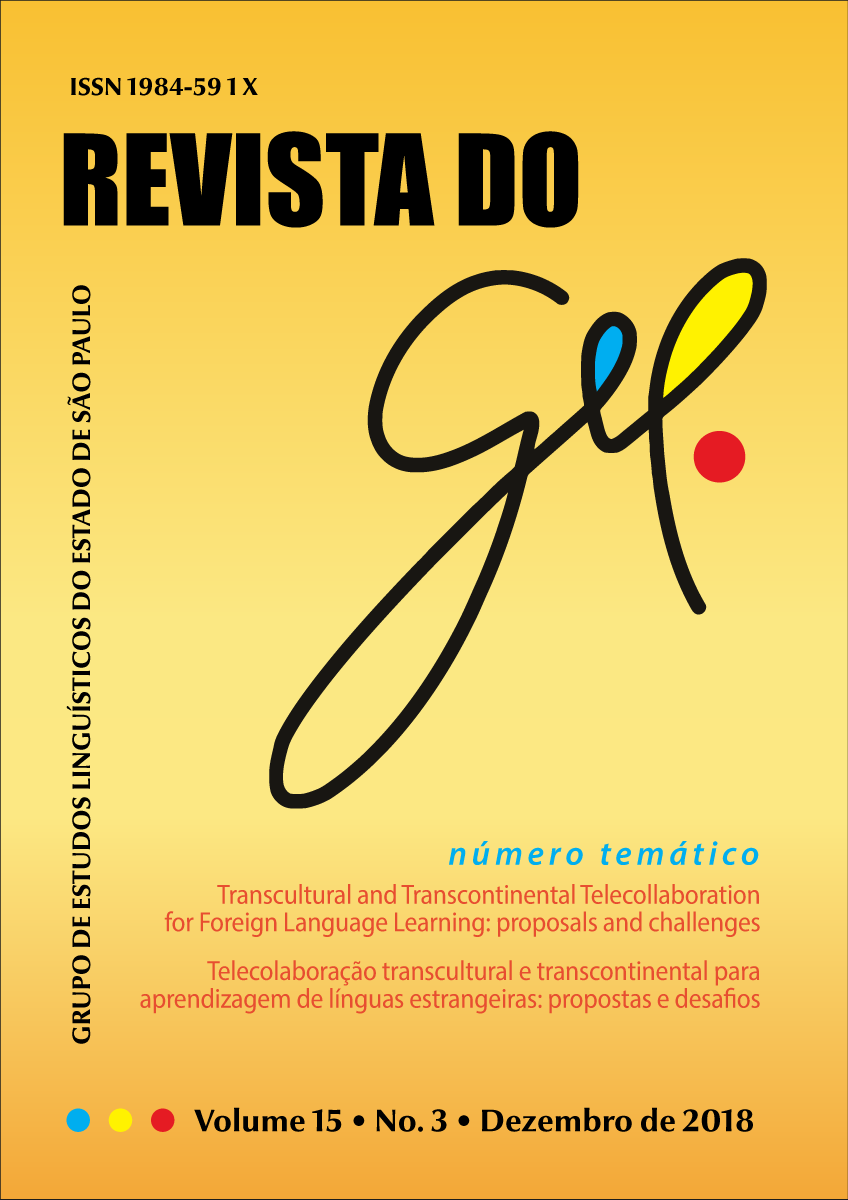A deaf and a hearing student learning Portuguese and Libras in a tandem context
DOI:
https://doi.org/10.21165/gel.v15i3.2389Palavras-chave:
Brazilian Sign Language. Tandem learning. Interaction. Collaboration.Resumo
Inclusive education in Brazil has created a linguistic reality at schools in which deaf and hearing people share the same space (QUADROS; KARNOPP, 2004). However, some obstacles make it hard for this interaction to flow naturally, both by deaf people who do not master Portuguese and hearing people who do not know Brazilian Sign Language. Various studies about the process of teaching and learning spoken languages emphasize the relevance of collaborative interaction in pairs or in groups in the co-construction of knowledge (FIGUEIREDO, 2006; SWAIN, 1995). It is in this collaborative context that the present research takes place with the objective of promoting authentic contact between deaf and hearing people, who are beginners in the languages being studied, by means of tandem language learning. It is an approach used in the learning of spoken languages with the purpose of promoting linguistic and cultural exchange among people whose native languages are different (BRAMMERTS, 1996). We intended to verify the possible benefits of such approach to the speakers of languages of different modalities: a spoken language (Portuguese) and a visual-spatial language (Brazilian Sign Language - Libras). A deaf student and a hearing one who take Brazilian Sign Language as a major at the Universidade Federal de Tocantins, Porto Nacional, Brazil, took part in this study. They had to teach each other idiomatic expressions in their own languages. The collaborative strategies used by them and the negotiation established in such encounters show that the interaction among deaf and hearing students contribute to the process of learning the languages.Downloads
Não há dados estatísticos.
Downloads
Publicado
31-12-2018
Como Citar
Figueiredo, F. J. Q. de, & Oliveira, Q. M. de. (2018). A deaf and a hearing student learning Portuguese and Libras in a tandem context. Revista Do GEL, 15(3), 58–72. https://doi.org/10.21165/gel.v15i3.2389
Edição
Seção
Edição Temática v. 15 n. 3 (2018)
Licença
Esta revista oferece acesso livre imediato ao seu conteúdo, seguindo o princípio de que disponibilizar gratuitamente o conhecimento científico ao público proporciona maior democratização mundial do conhecimento.
A REVISTA DO GEL não cobra taxa de submissão ou de editoração de artigos (articles processing charges – APC).
Os critérios gerais de direitos autorais da REVISTA DO GEL estão dispostos no termo de direitos autorais que cada autor aceita ao submeter seu trabalho no periódico. Como regra geral o periódico utiliza as regras CC BY-NC da Creative Commons (regra disponível em: https://creativecommons.org/licenses/by-nc/4.0/legalcode)



